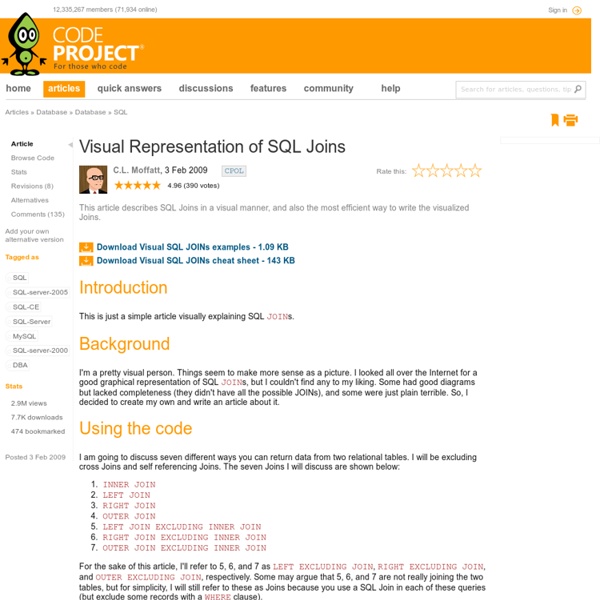Visual Representation of SQL Joins

QuickRef.org - all your docs are belong to us - PHP, Perl, CSS, HTML, Java, JavaScript, MySQL, Ruby, Python, and more
Assessing Linear Models in R | Connor Johnson
In this post I will look at several techniques for assessing linear models in R, via the IPython Notebook interface. I find the notebook interface to be more convenient for development and debugging because it allows one to evaluate cells instead of going back and forth between a script and a terminal. If you do not have the IPython Notebook, then you can check it out here. If you do not already have it, you will also need to install the rpy2 module. Once all of that is squared away, you should be able to open an IPython notebook from the terminal using, and load the rmagic extension using, We will be using the rock data set that comes with R. In the rock data set, twelve core samples were sampled by four cross-sections, making a total of 48 samples. The data collection was performed by BP, and the image analysis done by Ronit Katx, of the University of Oxford. A linear model attempts to describe an output variable in terms of a linear combination of predictor variables. Here, Residuals
Concepts for Fourier Transforms
A signal can be viewed from two different standpoints: The frequency domain The time domain In astronomy the frequency domain is perhaps the most familiar, because a spectrometer, e.g. a prism or a diffraction grating, splits light into its component color or frequencies and permits us to record its spectral content. This is like the trace on a spectrum analyzer, where the horizontal deflection is the frequency variable and the vertical deflection is the signals amplitude at that frequency. In the lab we are also familiar with the time domain. Any signal can be fully described in either of these domains. Depending on what we want to do with the signal, one domain tends to be more useful than the other, so rather than getting tied up in mathematics with a time domain signal we might convert it to the frequency domain where the mathematics are simpler. Back to Contents or on to Applications
Welcome to TheFourierTransform.com - The Fourier Transform Website
Related:
Related:



